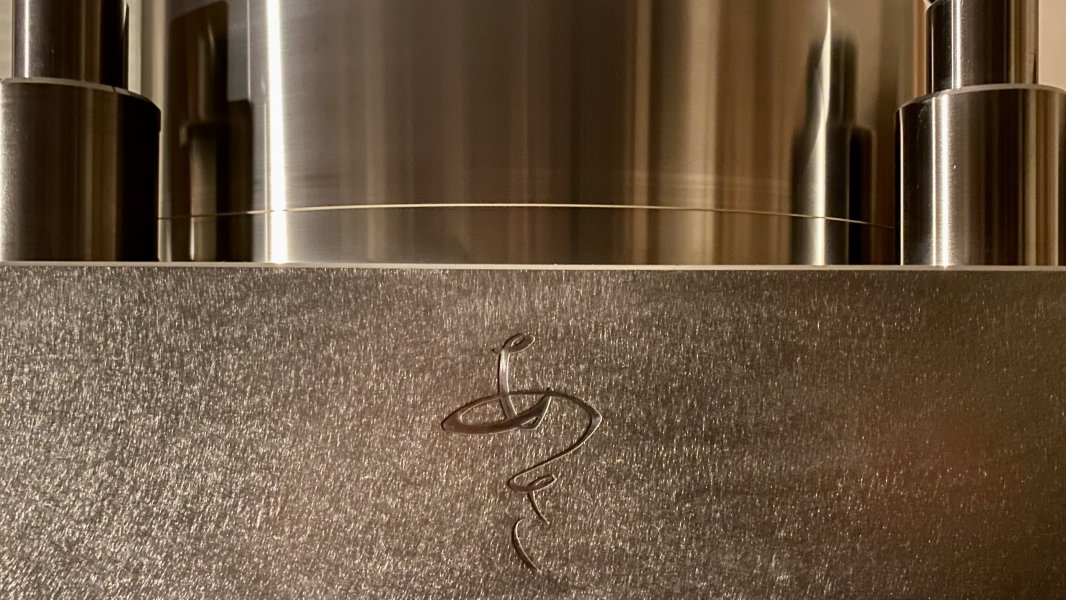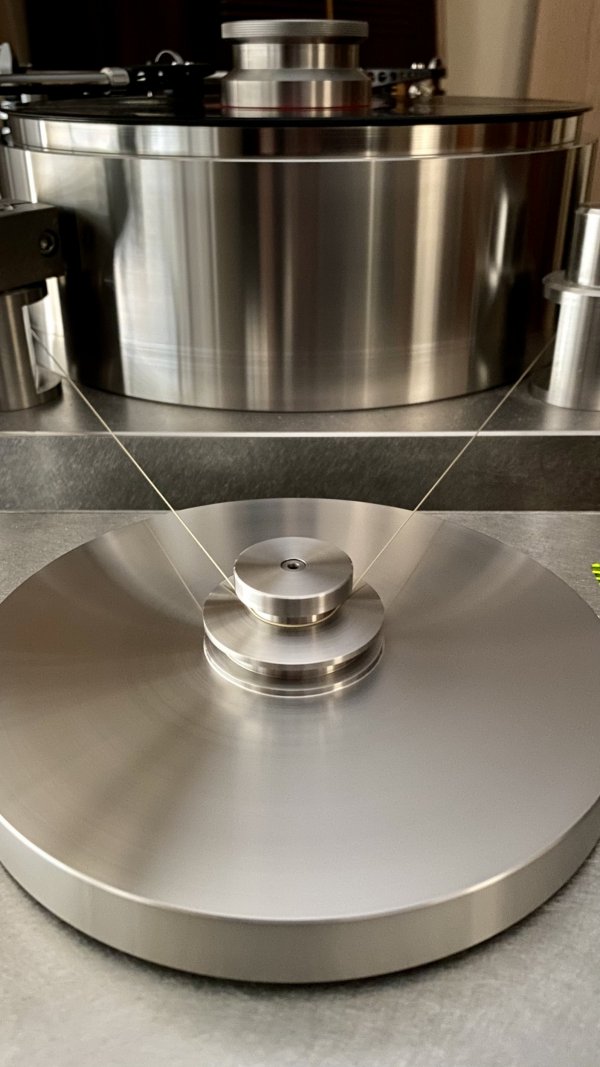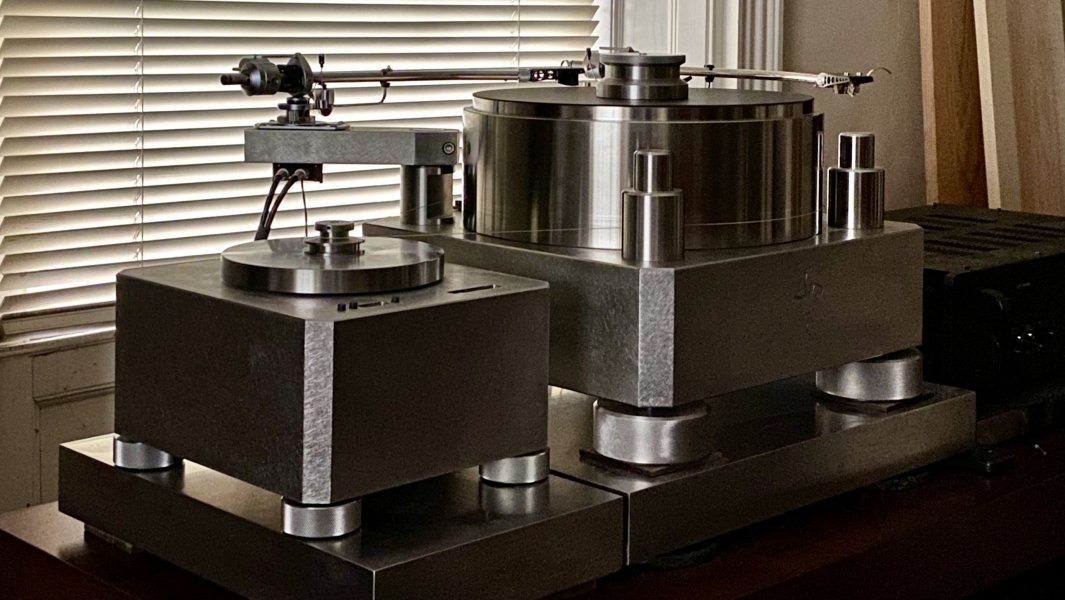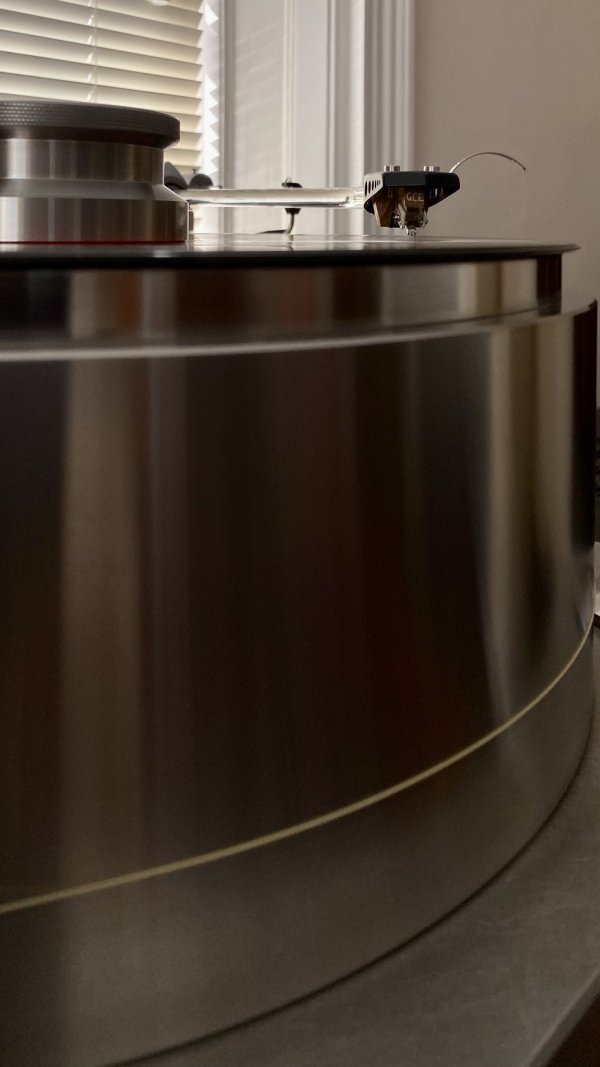High Mass thread Drive
- Thread starter PeterA
- Start date
You are using an out of date browser. It may not display this or other websites correctly.
You should upgrade or use an alternative browser.
You should upgrade or use an alternative browser.
Looks like a fantastic piece of machinery. I’m sure it sounds as good as it looks. Is it AS1000?
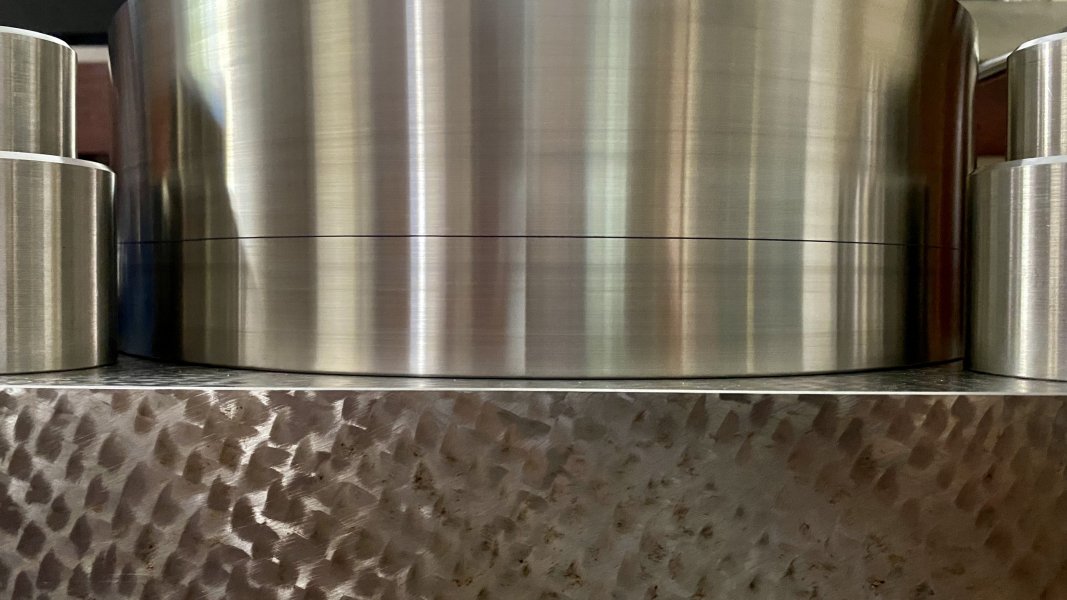
This is the AS 1000 with the hand worked base that I had in my room for about a month a little over a year ago. The photos in the original post are of my AS 2000.
I directly compared my Micro SX8000 II to the AS1000 and to the AS2000 for about a month. They follow the same design approach and sound similar but reach different levels or realism.
The approach is based on no speed correction and high mass to lower noise and maintain consistent speed. Also important is the very low friction bearing and minimal touch between the motor pulley and the platter.
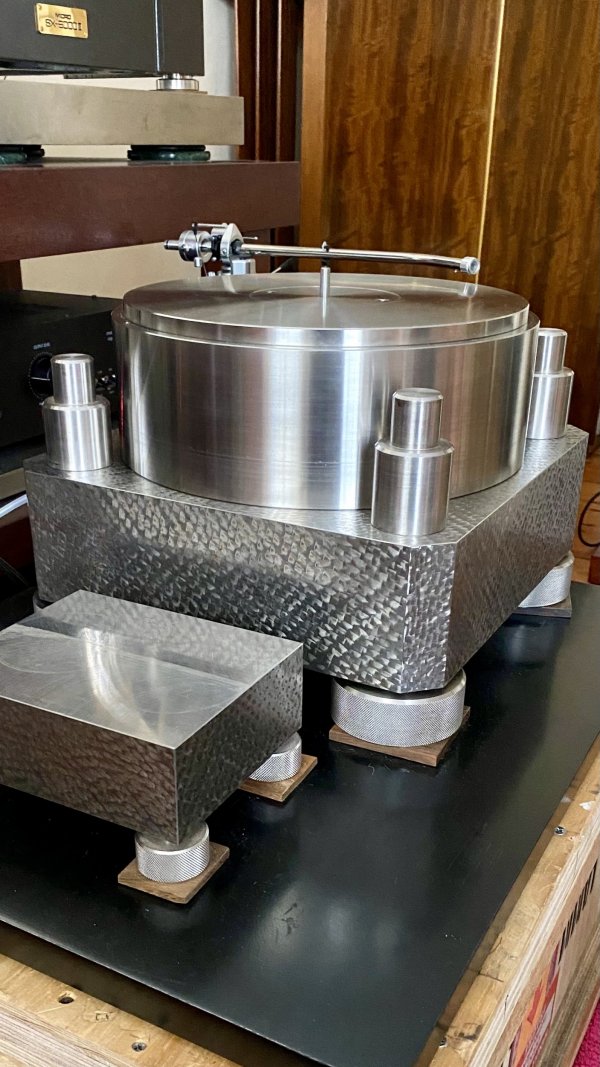
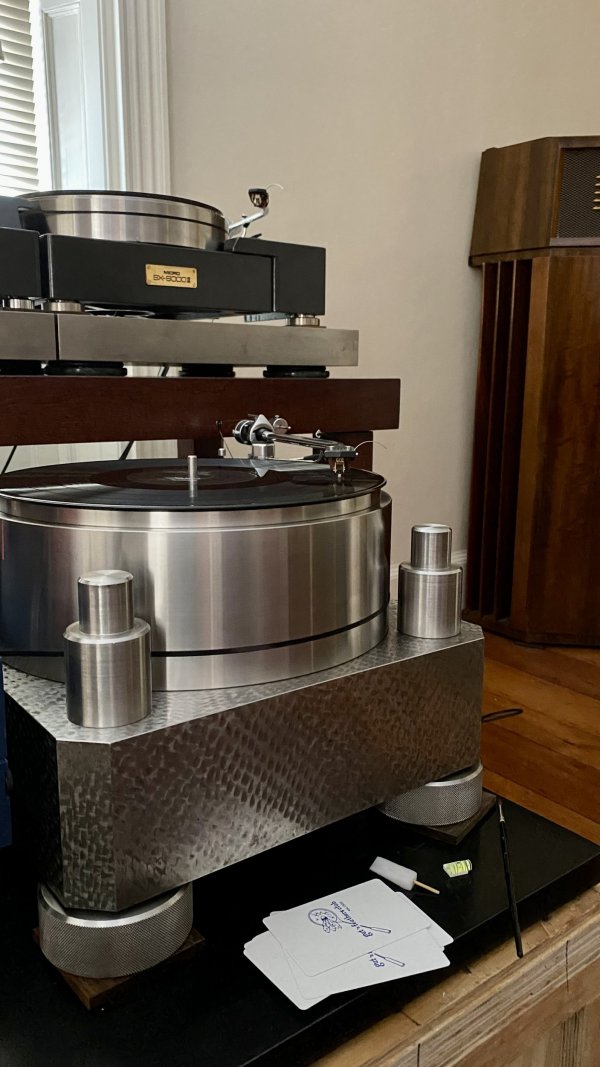
Last edited:
I agree. No speed correction is the key factor IMHO, especially when combined with a high speed DC motor.The approach is based on no speed correction and high mass to lower noise and maintain consistent speed.
The AS1000 belongs in a short list of beautiful industrial design. Minimalist and organic. Luv that hammered finish. In 1970 that thing must have been very exotic...
Never heard one but I am sure it sounds ok too
Never heard one but I am sure it sounds ok too
The AS1000 belongs in a short list of beautiful industrial design. Minimalist and organic. Luv that hammered finish. In 1970 that thing must have been very exotic...
Never heard one but I am sure it sounds ok too
I agree. It is stunning, and the original armboards also have that hammered finish. Actually, I think they are more chiseled with a very long tool with shoulder harness. David could not find anyone qualified to replicate that finish. It is a lost art. David's AS2000 is also hand finished. He calls the finish "silk shimmer". It is a bit more subtle, but I think it looks excellent and is a nice contrast to the very smooth finish of the platter and arm posts.
There were many attempts over the years to copy the original American Sound and match its sound. Occasionally, one comes across photos on the net, mostly of less successful knockoffs. David's AS 2000 pulls it off and sounds better in direct comparisons. He made some nice improvements to the original design. I had Vladimir Lamm's sample (on long term loan from ddk) in my house for comparison. You can read Steve W's and MikeL's accounts of the original American Sound on their visit threads to Utah. It was designed by a genius and made in a shipyard in Japan on special order for an audio dealership. No one knows how many were made. DDK has the two known samples.
Here is my old Micro Seiki SX 8000 II. It is another example of similar design principles. This photo was take before my belt, dental floss, thread experiments. Another example of Japanese industrial design at the highest level. I think it is incredibly beautiful.
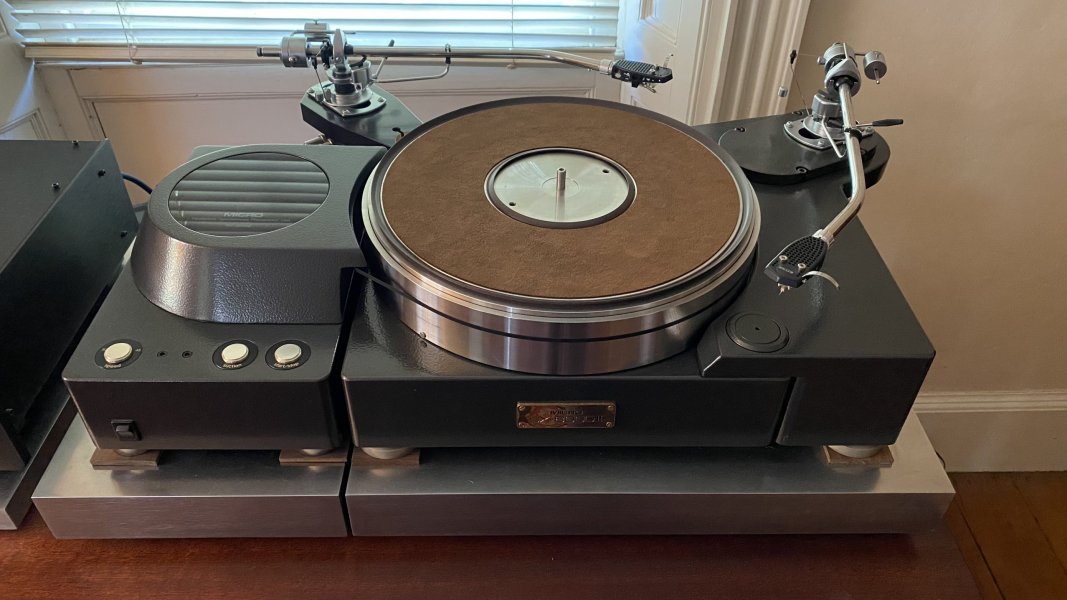
Last edited:
Have to agree on the design appeal, I was impressed with it since I saw one in Vlad Lamm's home years ago.
And a friend of mine has one in his system now. I wouldn't hesitate for a moment to buy it if I could afford it, but I can't.
Just ask my wife, she'll tell you.
And a friend of mine has one in his system now. I wouldn't hesitate for a moment to buy it if I could afford it, but I can't.
Just ask my wife, she'll tell you.
Just one word......AWESOME !View attachment 124833
This is the AS 1000 with the hand worked base that I had in my room for about a month a little over a year ago. The photos in the original post are of my AS 2000.
I directly compared my Micro SX8000 II to the AS1000 and to the AS2000 for about a month. They follow the same design approach and sound similar but reach different levels or realism.
The approach is based on no speed correction and high mass to lower noise and maintain consistent speed. Also important is the very low friction bearing and minimal touch between the motor pulley and the platter.
View attachment 124838
View attachment 124839
$$$$$$$$$££££££¥¥¥¥¥¥¥€€€€€How much would an AS2000 or AS1000 cost (assuming one was available to purchase) ?
I would love to see some phone app wow and speed measurements of those beautiful tts. Man i'm jealous!!..
What improvements does the 2000 have over the 1000?
Here are some of the improvements about which I am aware. Anyone is welcome to contact ddk for more information.
1. The LP/platter coupling is better, resulting in a very natural presentation. The 1000 is a flat stainless steel surface with no mat and no record weight. The 2000 is very slightly concave (0.5 degree or something from outer edge to record label). Then there is a leather mat and record weight. This is very effective at eliminating warps. David tested different sizes and weights for the record weight. Too light was not enough to flatten the warps, too heavy over damped the sound. He tested different leather types, different thicknesses and selected for best sonics. This interface between the record and platter is more effective at eliminating warps than the vacuum hold down of my Micro Seiki, and it is easier to use and less complex for long term reliability.
2. Both tables have a thinner upper platter. The AS1000 is stainless steel. The AS2000 is a different alloy that is non magnetic. The slightly magnetized stainless steel can be a problem for cartridges that have a large magnet like the vdH Colibri.
3. The AS2000 footers attach to the main base differently. This affects resonances traveling up from the support shelf for lower noise and improved sonics.
4. The AS2000 main base has different proportions and mass that affect internal resonances for lower noise and improved sonics.
5. The baring/platter design is improved for different air flow, lower noise, and better sonics.
6. The new motor, motor controller, motor housing, and the power supply are all improved.
7. The new pump is quieter and more reliable.
In sonic terms, the improvement is mostly in the quality of the bass. There is more weight, more articulation, more extension. There is a greater sense of what David refers to as "mass". It sounds more natural. There is also a greater sense of ease, and overall resolution is a bit better. I wrote the comments below (taken from my system thread) about the AS2000 about a month after I set it up in my system. I describe the sound relative to my Micro Seiki, but it also applies to a lesser extent to the AS1000. David was able to find a way to take the AS 2000 a bit further than the AS 1000.
People often suggest listening to one's system from outside the listening room, down the hallway or up the stairs. Eighteen months ago, I stood roughly in the middle of David's stairway in Utah leading down to his listening room in one direction and up to his living room in the other. Then, his daughter was playing her cello in her own quartet while David's system was playing Beethoven's Late Quartets. I remember at the time marveling at how similar the two actually sounded. This afternoon I began to understand why.
As I was getting ready to go out to dinner, I turned up the volume so that I could hear the music from my bedroom upstairs. As I was dressing, I noticed that the music sounded much more realistic outside the room than I remember. As I walked down the stairs closer to the door which was only half way open, I noticed three things: the timbre was more natural with this turntable, but more importantly, the dynamics and the sense of mass were much improved.
I was playing Art Pepper Plus Eleven. This is big band at its finest. From the stairs, the instruments were instantly recognizable for what they were, but what I really noticed was the dynamics and mass of the sound. The horns came through very clearly and were explosive, if a bit muted through the door and walls. Also, there was a sense of mass to the instruments that I never noticed from outside the room before. The low frequencies travelled and filled the stairway. The sax had a low growl and impact, the trumpets were piercing yet brassy and not bright. The clarinet had a gorgeous wood and reedy tone. The instruments played together and filled the space, yet there was a surprising clarity to each one individually as it came forward in the mix. The dynamics and mass gave the instruments a believable presence around the corner that was absent from the Micro Seiki. The tone was pretty similar though.
It was not just the beauty of the tone, but the pressure of the energy and the shear solidity of the instruments escaping the room that made the recorded music sound believable. And the dynamics jumped, even from the distance. These two characteristics are the key to the sense of realism and aliveness, it seems. This was exactly what I heard standing on David's stairway while comparing the sound of his daughter's real cello to the presentation through the Bionors. I just did not understand it fully at the time.
David told me that I would continue to learn as I lived with and got to know the system. He was right.
This evening after dinner I played Beethoven’s violin Concerto with Grumiaux, the same LP I listened to with Tima in Utah on our recnt trip together to visit David. Tonight was the first time hearing it on the new turntable. I remember some of the comments Tim made when listening to it. Tim told me that he had never heard Grumiaux play like that. The Micro Seiki, as excellent as it is, simply did not dig deep enough into the music to reveal as much about the beautiful and nuanced sound of Grumiaux's instrument. On the AS2000, the violin is more expressive, far more emotional and moving. Tim was swept away then, as I was here tonight.
There is also this: much more mass to all the instruments, regardless of volume. The foundation is more solid offering a greater contrast to the lighter and higher soaring violin. At the ending crescendo, there is this finality and resolve from the orchestra that overwhelmed the room with energy. People talk about tonal density. I hear a wash of energy filling the room emanating from every instrument on the stage. This is true natural resolution. I thought I understood that but now after actually hearing it in my room, I get it. This table is starting to reveal the system's capabilities. Music is coming alive in the room. The information has always been right there in the grooves, I am now just hearing more of it.
Last edited:
How much would an AS2000 or AS1000 cost (assuming one was available to purchase) ?
I do not know the current prices and availability. I suggest you contact David Karmeli directly.
Last edited:
I would love to see some phone app wow and speed measurements of those beautiful tts. Man i'm jealous!!..
I do not have a phone app to measure wow and flutter, but I do have a couple of interesting videos. The first shows the AS2000 platter free spinning from 33.333RPM until it stops. For a while you can see the tachometer reading. There is no thread or belt attached to the platter, so I had to get it up to speed by hand. The video is pretty boring but I filmed until the platter came to a complete stop. It took half an hour. Here is the video:
This video is with the Sutherland Timeline showing the laser dash on the wall behind the turntable and then across the room. You can also see the RoadRunner tachometer at the motor controller. If anyone has used this device, the fact that the dash line does not change in length and is in a stable position from that distance is pretty astonishing. The lack of movement to the left or right indicates that the speed is accurate at 33.333 RPM and does not speed up or slow down. The line not changing in length indicates that the speed does not fluctuate (wow and flutter) and remains constant. I have not seen this result from any other turntable that I have tested. Here is the video:
Last edited:
Hi Peter,I do not know the current prices and availability. I suggest you contact David Karmeli directly.
It was just a general question of interest only i.e. not to specifically purchase one (as much as I would like to - at least not in this lifetime anyway - i.e. after doing some online researching this morning and finding past information on one being advertised back in 2019 I can now assume the cost is way way above my financial means !).
Hi Peter are you going for the upgraded AS?
I do not think so. I have not heard it yet, but I suspect that my rack and floors cannot support the weight. The design is not like anything I’ve ever seen. Everything is taken to the extreme and I look forward to hearing it. It is an incredible effort.
Last edited:
Similar threads
- Replies
- 0
- Views
- 698
- Replies
- 197
- Views
- 14K
- Replies
- 60
- Views
- 4K
| Steve Williams Site Founder | Site Owner | Administrator | Ron Resnick Site Co-Owner | Administrator | Julian (The Fixer) Website Build | Marketing Managersing |





